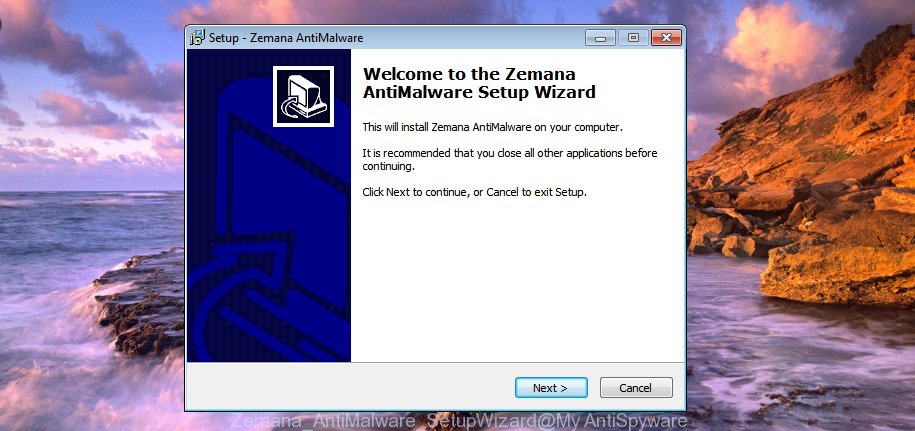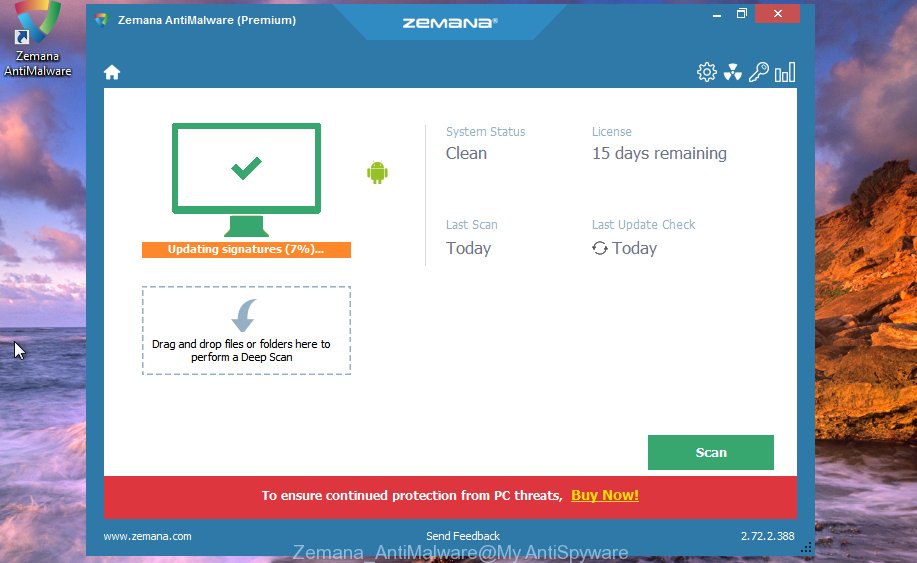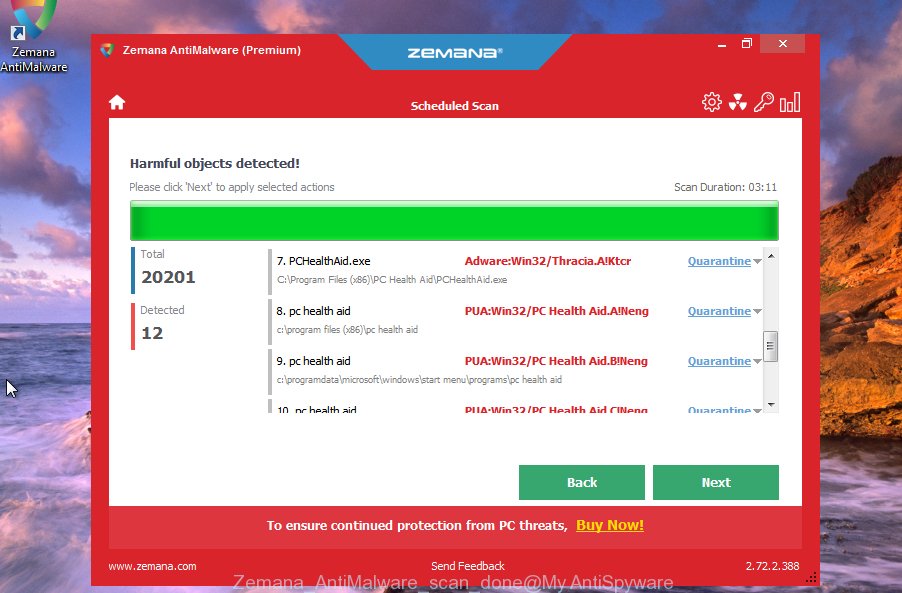You’ve made the 7.38-billionth search! is a web page that was created to trick your and other unsuspecting users into filling out an online form and thus stealing personal data, such as address, name, etc. Some time ago we already reported a similar deception, then it was called You’ve made the 5-billionth search. In addition to stealing personal data, “You’ve made the 7.38-billionth search!” page can be used to trick you into subscribing to paid services or buy unnecessary goods.
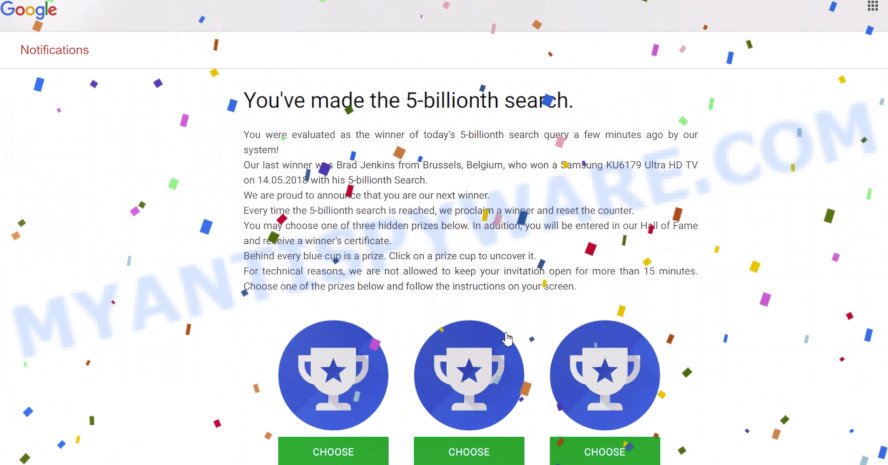
To each visitor to this page, scammers show the same thing. Attackers hint that the Google is drawing prizes among users of its search engine. Fraudsters report that Google gives a prize to a user whose search query was 10 millionth.
You’ve made the 7.38-billionth search!
Congratulations! You are the lucky winner!
Every 10 millionth search is reached worldwide, we will proclaim a winner to send out a thank-you gift.
Please select your lucky prize below and claim it by following the instruction.
Of course this message is a complete hoax. Information posted on “You’ve made the 7.38-billionth search” page cannot be trusted. Security researchers have found that such pages most often open in the browser when you click on misleading ads or links on suspicious web sites. In addition, this scam may be automatically opened in your browser using adware. Therefore, if this page unexpectedly opens on your screen, we recommend that you check your computer for adware and malware, for example, using free malware removal tools.
What is Adware & Is it actually malicious? Adware is unwanted software made to throw ads up on your browser screen. Adware generates profit for its creator by constantly displaying lots of ads and pop up deals. You might experience a change in your start page or search engine, new tabs opening or even a redirect to shady web pages.
The worst is, adware be able to collect a wide variety of user info about you to get profit. Adware can analyze your surfing, and gain access to your personal information and, later, can transfer it third party companies. Thus, there are more than enough reasons to remove adware software from the system.
Threat Summary
| Name | You’ve made the 7.38-billionth search |
| Type | scam, adware software, pop-up ads, popup virus, pop-ups |
| Symptoms |
|
| Removal | You’ve made the 7.38-billionth search removal guide |
Adware most likely to occur during the setup of free programs due the fact that unwanted software is commonly hidden in the install package. Thus, if you’ve installed some free applications using Quick(Standard) method, you may have let adware get inside your PC system. Keep in mind that the Quick mode is unreliable because it do not warn about optional software. Thus, bundled software will be installed automatically unless you select Advanced/Custom mode and uncheck its installation.
The tutorial below explaining steps to remove You’ve made the 7.38-billionth search pop ups problem. Feel free to use it for removal of the adware software that may attack Firefox, Google Chrome, IE and Microsoft Edge and other popular web browsers. The steps will help you remove adware software and thereby clean your web-browser from all intrusive ads.
How to remove You’ve made the 7.38-billionth search scam (Adware virus removal steps)
Not all unwanted software such as adware responsible for You’ve made the 7.38-billionth search pop up are easily uninstallable. You might see pop-ups, deals, text links, in-text ads, banners and other type of advertisements in the Edge, IE, Chrome and Mozilla Firefox and might not be able to figure out the application responsible for this activity. The reason for this is that many unwanted applications neither appear in MS Windows Control Panel. Therefore in order to completely remove You’ve made the 7.38-billionth search pop up scam, you need to execute the steps below. Some of the steps below will require you to close this web page. So, please read the few simple steps carefully, after that bookmark it or open it on your smartphone for later reference.
To remove You’ve made the 7.38-billionth search, use the following steps:
- How to remove You’ve made the 7.38-billionth search pop-up without any software
- Uninstall potentially unwanted applications through the Windows Control Panel
- Delete You’ve made the 7.38-billionth search from Mozilla Firefox by resetting web browser settings
- Remove You’ve made the 7.38-billionth search pop-ups from Chrome
- Remove You’ve made the 7.38-billionth search scam from Internet Explorer
- How to completely remove You’ve made the 7.38-billionth search scam using free tools
- Run AdBlocker to block You’ve made the 7.38-billionth search and stay safe online
- Finish words
How to remove You’ve made the 7.38-billionth search pop-up without any software
The step-by-step tutorial designed by our team will allow you manually remove You’ve made the 7.38-billionth search pop-up scam from your web-browser. If you have little experience in using computers, we advise that you use the free utilities listed below.
Uninstall potentially unwanted applications through the Windows Control Panel
Check out the Windows Control Panel (Programs and Features section) to see all installed applications. We suggest to click on the “Date Installed” in order to sort the list of apps by the date you installed them. If you see any unknown and questionable applications, they are the ones you need to uninstall.
Make sure you have closed all browsers and other programs. Next, remove any unwanted and suspicious programs from your Control panel.
Windows 10, 8.1, 8
Now, click the Windows button, type “Control panel” in search and press Enter. Choose “Programs and Features”, then “Uninstall a program”.
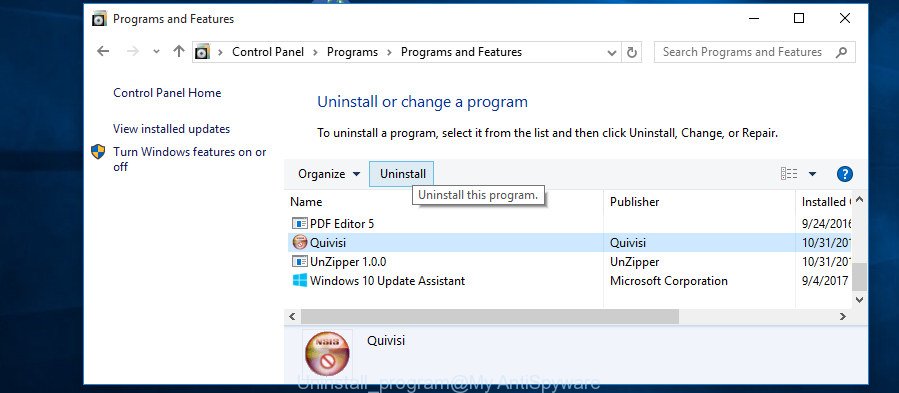
Look around the entire list of software installed on your computer. Most likely, one of them is the adware that cause pop up scam. Select the questionable program or the program that name is not familiar to you and uninstall it.
Windows Vista, 7
From the “Start” menu in MS Windows, choose “Control Panel”. Under the “Programs” icon, select “Uninstall a program”.
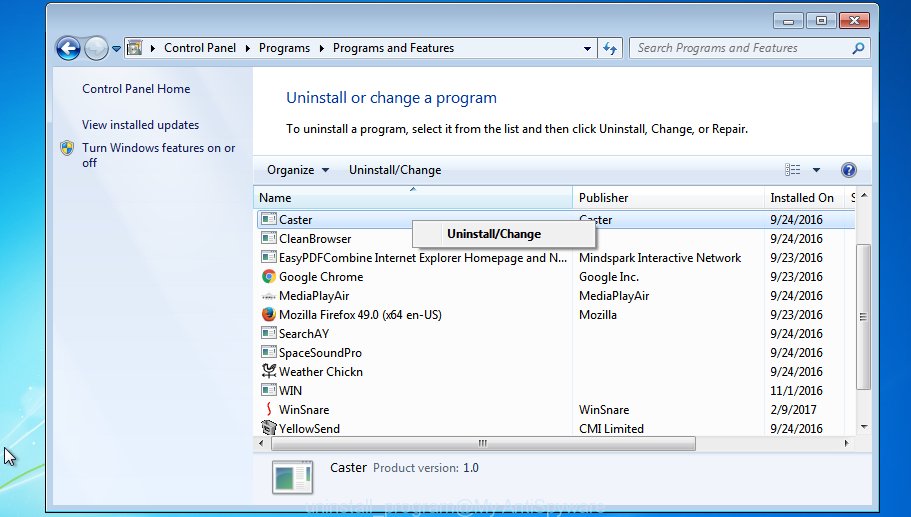
Select the suspicious or any unknown applications, then click “Uninstall/Change” button to delete this undesired program from your computer.
Windows XP
Click the “Start” button, select “Control Panel” option. Click on “Add/Remove Programs”.
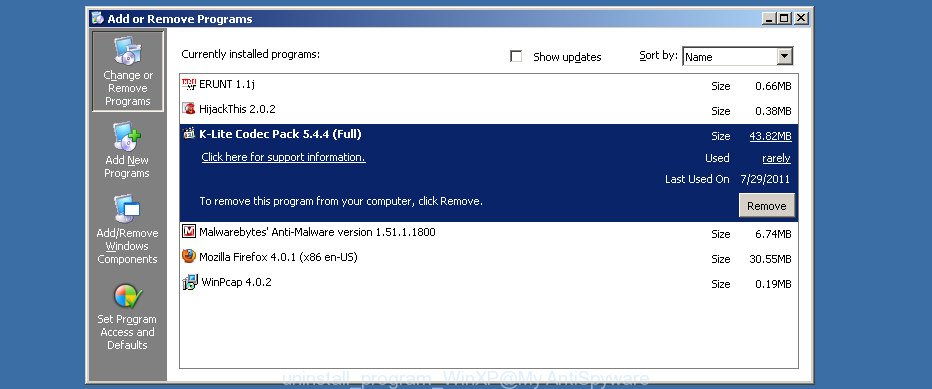
Choose an unwanted program, then click “Change/Remove” button. Follow the prompts.
Delete You’ve made the 7.38-billionth search from Mozilla Firefox by resetting web browser settings
If the Firefox settings such as new tab, homepage and search engine by default have been modified by the adware, then resetting it to the default state can help. Essential information like bookmarks, browsing history, passwords, cookies, auto-fill data and personal dictionaries will not be removed.
First, run the Firefox. Next, press the button in the form of three horizontal stripes (![]() ). It will open the drop-down menu. Next, click the Help button (
). It will open the drop-down menu. Next, click the Help button (![]() ).
).

In the Help menu click the “Troubleshooting Information”. In the upper-right corner of the “Troubleshooting Information” page press on “Refresh Firefox” button as displayed below.

Confirm your action, press the “Refresh Firefox”.
Remove You’ve made the 7.38-billionth search pop-ups from Chrome
If adware, other program or plugins replaced your Chrome settings without your knowledge, then you can remove You’ve made the 7.38-billionth search scam and restore your browser settings in Chrome at any time. However, your themes, bookmarks, history, passwords, and web form auto-fill information will not be deleted.
First run the Google Chrome. Next, press the button in the form of three horizontal dots (![]() ).
).
It will show the Google Chrome menu. Choose More Tools, then click Extensions. Carefully browse through the list of installed add-ons. If the list has the extension signed with “Installed by enterprise policy” or “Installed by your administrator”, then complete the following tutorial: Remove Chrome extensions installed by enterprise policy.
Open the Google Chrome menu once again. Further, click the option named “Settings”.
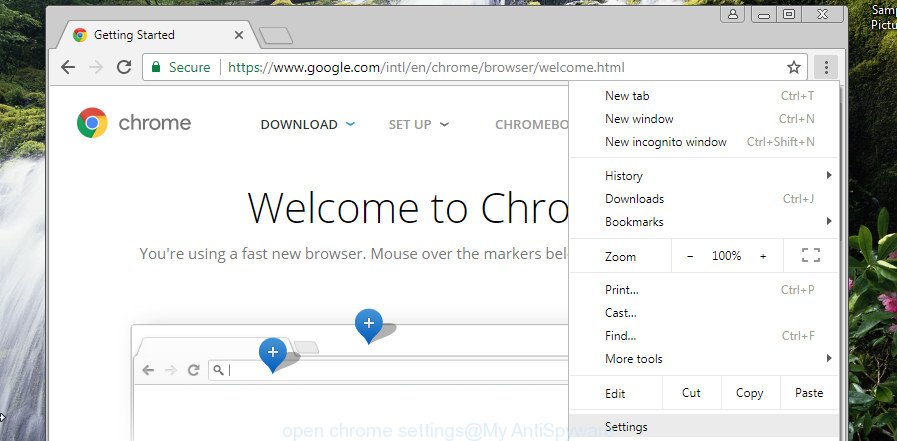
The browser will display the settings screen. Another solution to open the Google Chrome’s settings – type chrome://settings in the internet browser adress bar and press Enter
Scroll down to the bottom of the page and click the “Advanced” link. Now scroll down until the “Reset” section is visible, as on the image below and click the “Reset settings to their original defaults” button.
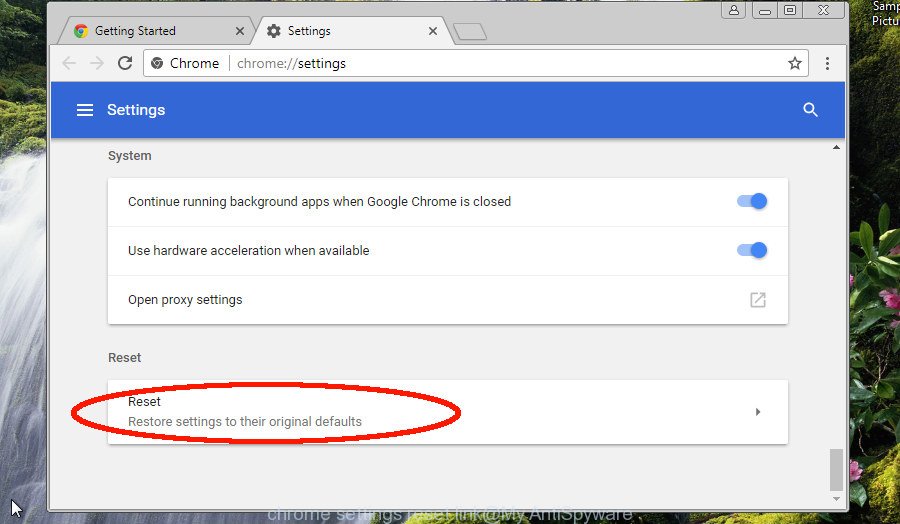
The Google Chrome will open the confirmation prompt as shown in the figure below.

You need to confirm your action, click the “Reset” button. The web-browser will start the procedure of cleaning. Once it is done, the web-browser’s settings including new tab page, search engine by default and home page back to the values which have been when the Google Chrome was first installed on your machine.
Remove You’ve made the 7.38-billionth search scam from Internet Explorer
If you find that Microsoft Internet Explorer web browser settings like homepage, search engine and new tab page had been modified by adware responsible for You’ve made the 7.38-billionth search pop-ups, then you may return your settings, via the reset browser procedure.
First, run the IE, click ![]() ) button. Next, press “Internet Options” as shown on the screen below.
) button. Next, press “Internet Options” as shown on the screen below.

In the “Internet Options” screen select the Advanced tab. Next, click Reset button. The IE will display the Reset Internet Explorer settings dialog box. Select the “Delete personal settings” check box and click Reset button.

You will now need to reboot your PC system for the changes to take effect. It will delete adware that causes You’ve made the 7.38-billionth search pop up, disable malicious and ad-supported browser’s extensions and restore the Microsoft Internet Explorer’s settings like search engine, start page and new tab page to default state.
How to completely remove You’ve made the 7.38-billionth search scam using free tools
Spyware, adware software, PUPs and browser hijackers can be difficult to get rid of manually. Do not try to delete this programs without the help of malware removal tools. In order to completely remove adware software from your computer, use professionally created tools, such as Zemana Free, MalwareBytes and HitmanPro.
Run Zemana Free to get rid of You’ve made the 7.38-billionth search scam
Zemana AntiMalware (ZAM) is a malicious software removal utility created for MS Windows. This utility will allow you get rid of You’ve made the 7.38-billionth search pop-ups, various types of malware (including hijacker infections and PUPs) from your system. It has simple and user friendly interface. While the Zemana Anti-Malware (ZAM) does its job, your computer will run smoothly.
- Zemana AntiMalware (ZAM) can be downloaded from the following link. Save it to your Desktop so that you can access the file easily.
Zemana AntiMalware
165465 downloads
Author: Zemana Ltd
Category: Security tools
Update: July 16, 2019
- Once you have downloaded the install file, make sure to double click on the Zemana.AntiMalware.Setup. This would start the Zemana AntiMalware (ZAM) install on your computer.
- Select install language and click ‘OK’ button.
- On the next screen ‘Setup Wizard’ simply click the ‘Next’ button and follow the prompts.

- Finally, once the install is done, Zemana Free will launch automatically. Else, if doesn’t then double-click on the Zemana AntiMalware icon on your desktop.
- Now that you have successfully install Zemana, let’s see How to use Zemana Anti-Malware to get rid of You’ve made the 7.38-billionth search pop-up from your computer.
- After you have started the Zemana AntiMalware (ZAM), you will see a window as displayed below, just click ‘Scan’ button for scanning your PC system for the adware.

- Now pay attention to the screen while Zemana Free scans your system.

- As the scanning ends, Zemana AntiMalware will display a list of all threats detected by the scan. Once you’ve selected what you want to delete from your PC press ‘Next’ button.

- Zemana Free may require a restart machine in order to complete You’ve made the 7.38-billionth search popup removal procedure.
- If you want to completely remove adware from your PC system, then click ‘Quarantine’ icon, select all malicious software, adware, PUPs and other items and press Delete.
- Reboot your system to complete the adware removal procedure.
Use HitmanPro to remove You’ve made the 7.38-billionth search pop-up scam
If the You’ve made the 7.38-billionth search scam issue persists, run the HitmanPro and scan if your web-browser is infected by adware. The HitmanPro is a downloadable security tool that provides on-demand scanning and helps delete adware, PUPs, and other malicious software. It works with your existing antivirus software.
First, visit the page linked below, then click the ‘Download’ button in order to download the latest version of HitmanPro.
When the downloading process is finished, open the directory in which you saved it. You will see an icon like below.

Double click the Hitman Pro desktop icon. Once the tool is started, you will see a screen as on the image below.
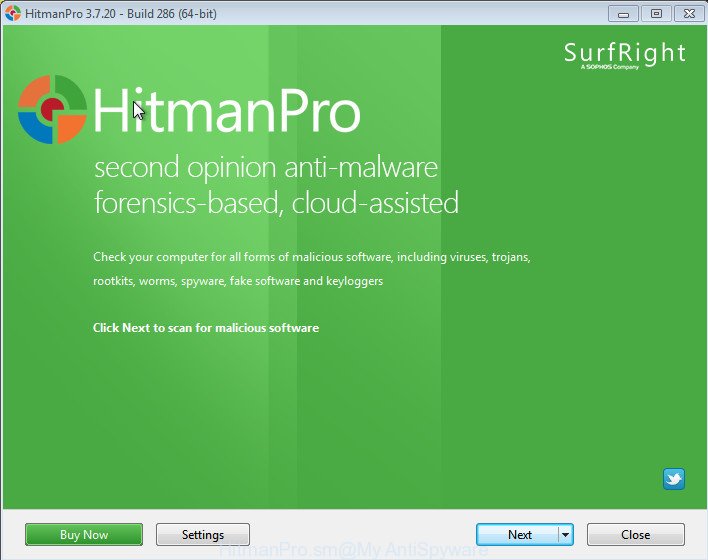
Further, click “Next” button to begin checking your personal computer for the adware that causes multiple annoying pop ups. This process can take some time, so please be patient. As the scanning ends, HitmanPro will display you the results as displayed on the image below.
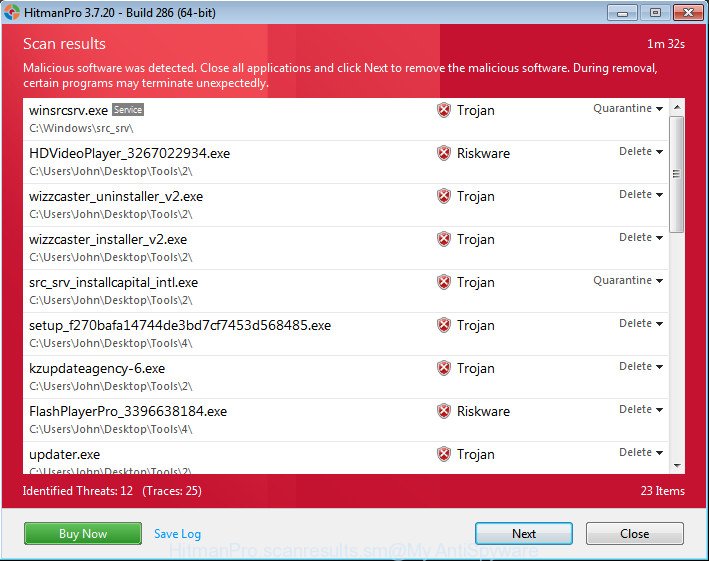
Make sure to check mark the threats which are unsafe and then press “Next” button. It will open a prompt, click the “Activate free license” button.
How to automatically remove You’ve made the 7.38-billionth search with MalwareBytes AntiMalware
We suggest using the MalwareBytes Anti Malware. You can download and install MalwareBytes Free to detect adware and thereby remove You’ve made the 7.38-billionth search pop ups from your web browsers. When installed and updated, this free malware remover automatically identifies and deletes all threats exist on the personal computer.
Download MalwareBytes on your Windows Desktop from the link below.
327690 downloads
Author: Malwarebytes
Category: Security tools
Update: April 15, 2020
After the downloading process is finished, close all software and windows on your PC. Double-click the install file called mb3-setup. If the “User Account Control” prompt pops up as shown in the following example, click the “Yes” button.
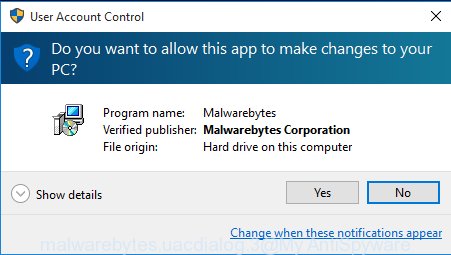
It will open the “Setup wizard” which will help you setup MalwareBytes Free on your system. Follow the prompts and do not make any changes to default settings.
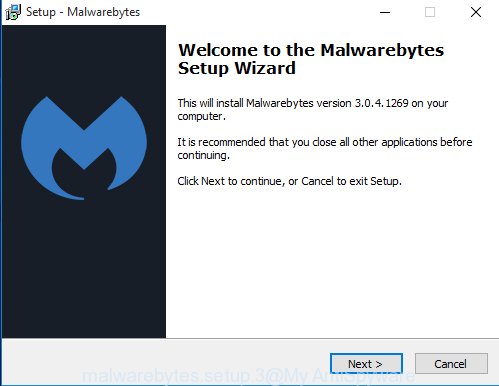
Once setup is done successfully, click Finish button. MalwareBytes AntiMalware will automatically start and you can see its main screen like below.
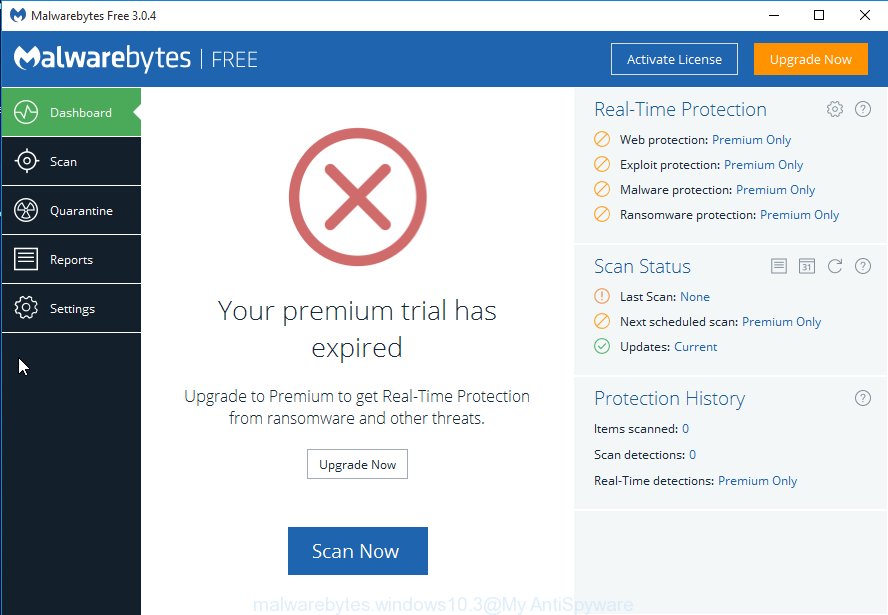
Now click the “Scan Now” button to perform a system scan for the adware related to You’ve made the 7.38-billionth search pop ups. During the scan MalwareBytes will find threats present on your machine.
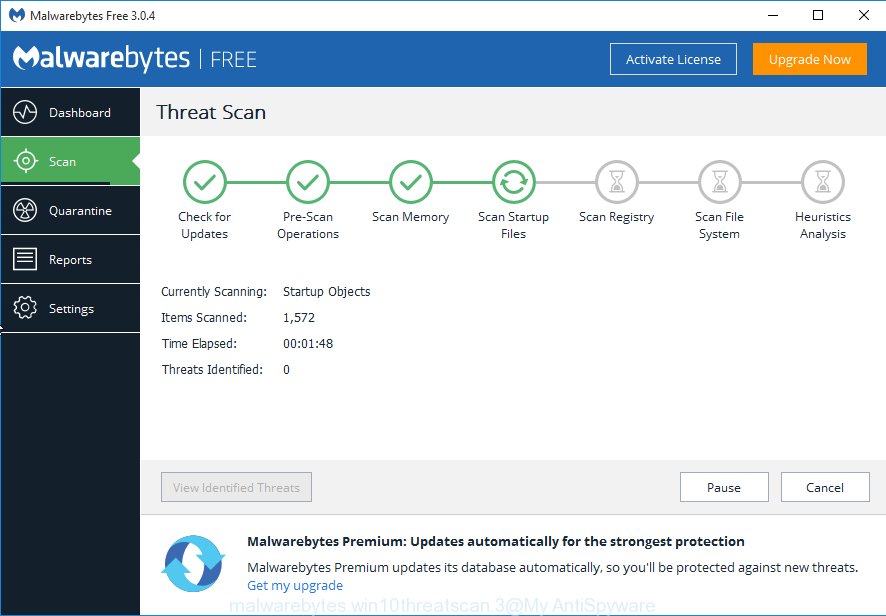
Once the scan get completed, MalwareBytes AntiMalware (MBAM) will open a scan report. Review the results once the utility has done the system scan. If you think an entry should not be quarantined, then uncheck it. Otherwise, simply click “Quarantine Selected” button. The MalwareBytes AntiMalware will delete adware which cause popup scam and add items to the Quarantine. Once finished, you may be prompted to restart the system.

We suggest you look at the following video, which completely explains the process of using the MalwareBytes to remove adware, hijacker and other malware.
Run AdBlocker to block You’ve made the 7.38-billionth search and stay safe online
One of the worst things is the fact that you cannot block all those annoying web sites such as You’ve made the 7.38-billionth search using only built-in Microsoft Windows capabilities. However, there is a program out that you can use to block intrusive browser redirections, advertisements and popups in any modern web browsers including Microsoft Edge, Microsoft Internet Explorer, Mozilla Firefox and Chrome. It’s named Adguard and it works very well.
- Download AdGuard by clicking on the link below.
Adguard download
27029 downloads
Version: 6.4
Author: © Adguard
Category: Security tools
Update: November 15, 2018
- After downloading it, start the downloaded file. You will see the “Setup Wizard” program window. Follow the prompts.
- Once the setup is finished, click “Skip” to close the install program and use the default settings, or click “Get Started” to see an quick tutorial which will assist you get to know AdGuard better.
- In most cases, the default settings are enough and you do not need to change anything. Each time, when you start your machine, AdGuard will launch automatically and stop undesired advertisements, block You’ve made the 7.38-billionth search scam, as well as other harmful or misleading web pages. For an overview of all the features of the program, or to change its settings you can simply double-click on the icon called AdGuard, that is located on your desktop.
Finish words
Now your machine should be clean of the adware that causes You’ve made the 7.38-billionth search scam in your browser. We suggest that you keep Zemana Free (to periodically scan your personal computer for new adwares and other malicious software) and AdGuard (to help you stop unwanted popup ads and harmful websites). Moreover, to prevent any adware, please stay clear of unknown and third party applications, make sure that your antivirus program, turn on the option to scan for potentially unwanted applications.
If you need more help with You’ve made the 7.38-billionth search scam related issues, go to here.

